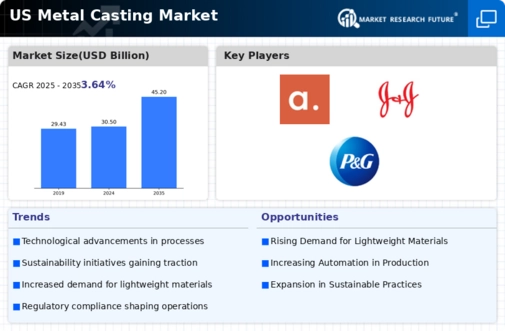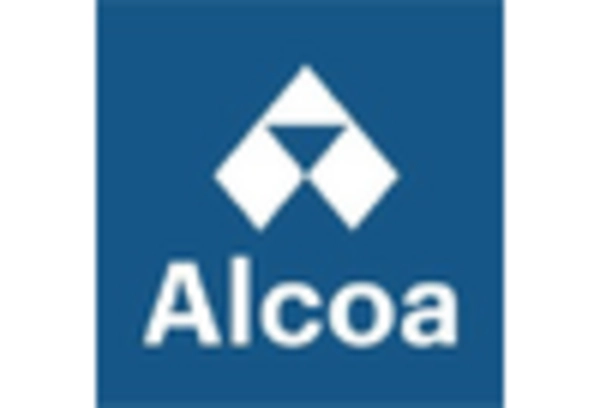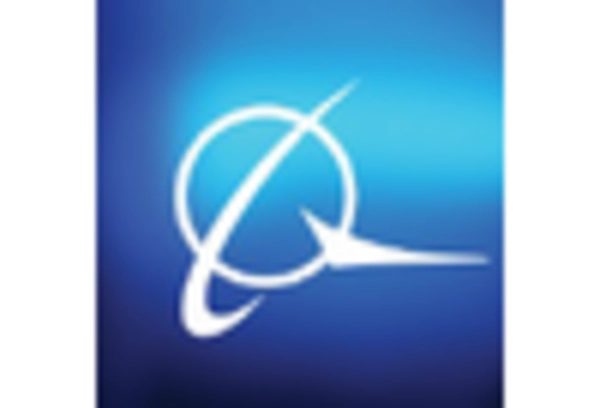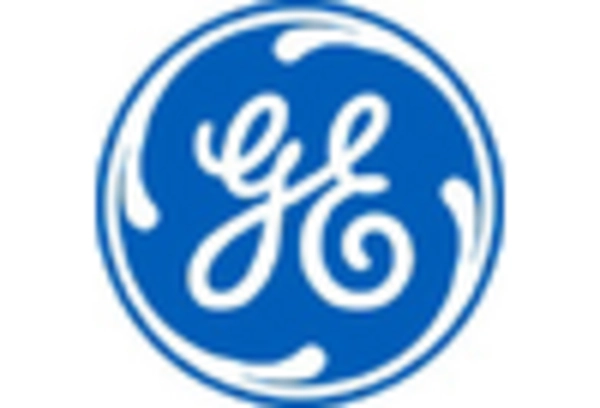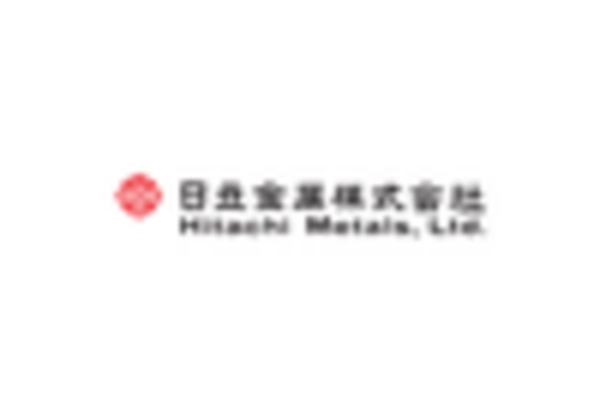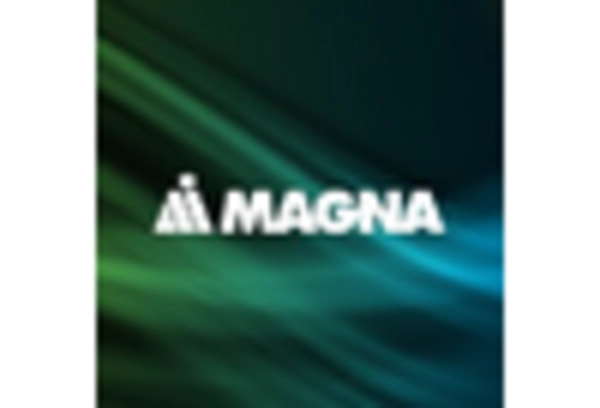The metal casting market exhibits a dynamic competitive landscape characterized by innovation, strategic partnerships, and a focus on sustainability. Key players such as Alcoa (US), General Electric (US), and Waupaca Foundry (US) are actively shaping the market through their operational strategies. Alcoa (US) emphasizes technological advancements in aluminum casting, aiming to enhance efficiency and reduce environmental impact. General Electric (US) focuses on integrating advanced manufacturing techniques, particularly in aerospace applications, which positions it favorably in a niche market. Waupaca Foundry (US) is leveraging its extensive experience in iron casting to expand its footprint in the automotive sector, indicating a strategic alignment with industry demands.
The business tactics employed by these companies reflect a trend towards localizing manufacturing and optimizing supply chains to enhance responsiveness to market needs. The competitive structure of the market appears moderately fragmented, with several players vying for market share. However, the collective influence of major companies like Alcoa (US) and General Electric (US) suggests a potential for consolidation as they seek to leverage synergies and enhance operational efficiencies.
In September 2025, Alcoa (US) announced a partnership with a leading technology firm to develop a new aluminum alloy that promises to reduce weight while maintaining strength. This strategic move is likely to enhance Alcoa's competitive edge in the automotive and aerospace sectors, where lightweight materials are increasingly in demand. The collaboration underscores the importance of innovation in meeting evolving industry standards and customer expectations.
In October 2025, General Electric (US) unveiled a new digital platform aimed at optimizing the supply chain for its metal casting operations. This initiative is expected to streamline processes and improve production efficiency, thereby reducing costs. The strategic importance of this development lies in its potential to enhance GE's operational agility, allowing it to respond more effectively to fluctuations in demand and supply chain disruptions.
In August 2025, Waupaca Foundry (US) expanded its production capabilities by investing in advanced automation technologies. This investment is anticipated to increase production capacity and improve product quality, positioning Waupaca as a leader in the foundry sector. The strategic significance of this expansion is evident in its alignment with the growing trend towards automation in manufacturing, which is likely to enhance competitiveness in a rapidly evolving market.
As of November 2025, the competitive trends in the metal casting market are increasingly defined by digitalization, sustainability, and the integration of artificial intelligence. Strategic alliances are becoming more prevalent, as companies recognize the need to collaborate in order to innovate and meet regulatory requirements. The shift from price-based competition to a focus on technological advancement and supply chain reliability is evident, suggesting that future competitive differentiation will hinge on the ability to innovate and adapt to changing market dynamics.


